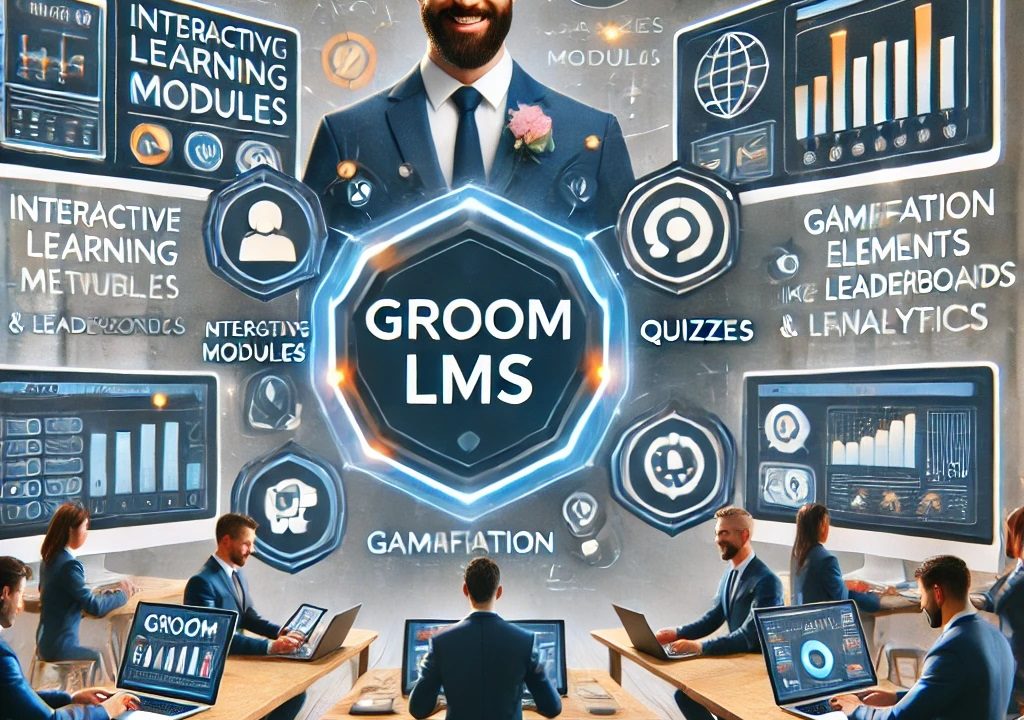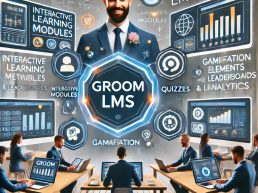The Ultimate Guide to Learning Management Systems (LMS)

In today’s digital age, organizations across various industries are embracing technology to streamline their learning and development efforts. One of the most impactful tools in this evolution is the Learning Management System (LMS). Whether you’re looking to train employees, enhance your company’s learning strategy, or provide a platform for online courses, understanding what an LMS is and how it works is key to selecting the right solution.
What is an LMS?
A Learning Management System (LMS) is a software platform designed to deliver, track, manage, and report on training and learning activities. It centralizes educational content, making it accessible to learners anytime and anywhere. From corporate training to educational institutions, LMS platforms are widely used for managing both formal and informal learning experiences.
LMS: The Definition
In simple terms, an LMS is a digital solution that helps organizations manage, track, and optimize their learning programs. It provides a centralized location for all learning resources, enabling learners to access courses, assessments, and other educational tools. The system allows administrators to track learner progress, assign training modules, and analyze results.
What Are Learning Management Systems Used For?
LMS platforms are used for a variety of purposes, such as:
- Employee Training: Onboarding, skill development, compliance training, and performance management.
- E-learning: Online courses for learners, including multimedia lessons, interactive assessments, and certifications.
- Compliance: Ensuring employees complete required training, meeting industry standards, and reporting compliance.
- Education: Used by schools, colleges, and universities to manage and deliver courses to students.
- Content Delivery: Distributing learning materials such as documents, videos, quizzes, and interactive content.
Types of Learning Supported by Learning Management Platforms
LMS platforms support various types of learning styles and delivery methods, such as:
- Instructor-Led Training (ILT): Traditional classroom-based learning with the addition of digital tools for content delivery.
- Blended Learning: A combination of online learning and in-person classroom sessions.
- Self-Paced Learning: Learners complete courses at their own pace, accessing content and assessments as needed.
- Social Learning: Collaborative learning through forums, discussions, and group activities.
- Microlearning: Bite-sized learning modules designed to deliver quick knowledge in small chunks.
Who Uses an LMS?
An LMS can be used by a wide range of organizations and individuals, including:
- Corporate Organizations: For employee training and development, ensuring that staff are equipped with necessary skills.
- Educational Institutions: Schools, colleges, and universities use LMS for course delivery, managing assignments, and grading.
- Government Agencies: For compliance training, certifications, and employee development.
- Non-profits and NGOs: For volunteer training, capacity-building programs, and educational initiatives.
- Freelancers and Consultants: Individuals offering training programs or courses can use LMS platforms to reach a global audience.
Which Industries Use an LMS?
LMS platforms are utilized across various industries, such as:
- Healthcare: For compliance training, medical certifications, and continuous education.
- Retail: Employee onboarding, sales training, and product knowledge.
- Finance: Regulatory compliance, employee certifications, and leadership training.
- Technology: Software training, coding tutorials, and certifications.
- Manufacturing: Safety training, technical skills development, and workforce compliance.
The Benefits of Using an LMS for Both Employers and Employees
Benefits for Employers:
- Centralized Learning: Easy access to all training materials and performance data in one place.
- Scalability: Train a large workforce without additional costs like travel and venue booking.
- Tracking & Reporting: Monitor learner progress and generate detailed reports for analysis.
- Cost-Effective: Reduces the cost of traditional training methods, such as hiring trainers or renting venues.
- Compliance: Ensure employees are up-to-date with mandatory training and certifications.
Benefits for Employees:
- Convenience: Learn at their own pace, at times that suit their schedule.
- Variety: Access to a variety of learning resources, including videos, quizzes, and assignments.
- Personalized Learning: Tailored learning paths to meet individual skill development needs.
- Engagement: Interactive elements like gamification, leaderboards, and badges to increase motivation.
How an LMS Works
An LMS works by providing a platform where content can be created, delivered, and tracked. Here’s a basic breakdown of how it functions:
- Course Creation: Administrators or instructors upload content (videos, slides, PDFs) and create courses.
- Enrollment: Learners enroll in courses or are automatically assigned based on their roles or needs.
- Learning Delivery: Learners access the course materials and complete assessments, quizzes, or assignments.
- Tracking and Reporting: The LMS tracks learners’ progress, completion rates, scores, and certifications.
- Analysis: Admins can analyze performance data to improve learning programs and identify skill gaps.
What Features Does an LMS Have?
LMS platforms come with a variety of features, including:
- Content Management: Tools to create, upload, and organize learning content.
- Assessment Tools: Quizzes, exams, and surveys to measure learner progress.
- Learner Management: User profiles, course enrollment, and tracking of progress.
- Reporting & Analytics: Insights into learner performance, engagement, and overall course effectiveness.
- Certification Management: The ability to issue digital certificates to learners upon course completion.
- Mobile Accessibility: Access to learning content on mobile devices for convenience.
What Are the Different Types of LMS Deployment?
LMS platforms can be deployed in different ways, based on the organization’s needs:
- Cloud-Based LMS: Hosted on the vendor’s servers, offering easy access from anywhere.
- On-Premise LMS: Installed and hosted on an organization’s own servers, offering more control but requiring IT resources.
- Open-Source LMS: Free to use, customizable, and suitable for organizations with specific needs or limited budgets.
Are There Other Types of Learning Platforms Other Than an LMS?
Yes, there are other types of learning platforms, such as:
- Learning Experience Platforms (LXP): Focuses on personalized, social, and learner-driven experiences.
- Content Management Systems (CMS): Primarily used to manage content rather than deliver structured learning.
- Talent Management Systems (TMS): Incorporates learning with talent acquisition, performance management, and succession planning.
How to Pick the Best LMS for Your Needs
Choosing the right LMS requires careful consideration of several factors:
- Ease of Use: A user-friendly interface for both learners and administrators.
- Features: Ensure the LMS has the functionality you need (e.g., content management, assessments, reporting).
- Scalability: The platform should grow with your organization and its evolving needs.
- Integration: It should integrate seamlessly with other tools or systems you use.
- Support & Training: Look for vendors that offer good customer support and resources for training your team.
Why Choose Groom LMS?
Groom LMS is designed to cater to businesses and organizations of all sizes, offering a seamless and user-friendly platform that simplifies training, boosts employee engagement, and helps improve performance. With its intuitive design, scalability, and comprehensive features, Groom LMS empowers organizations to develop their teams more effectively and efficiently.
How Groom LMS Makes a Real Difference to Your Training
With Groom LMS, you can enhance your training programs by:
- Streamlining Course Delivery: Easily upload and manage training content, making it accessible to all employees.
- Personalized Learning: Tailor learning paths to individual employees, ensuring that everyone gets the training they need.
- Powerful Reporting: Monitor progress and performance with in-depth analytics to measure the effectiveness of your programs.
- Engagement Tools: Use interactive tools like gamification and social learning to boost employee motivation.
In conclusion, a Learning Management System (LMS) is an invaluable tool for organizations looking to optimize learning and development efforts. By choosing the right LMS platform, like Groom LMS, you can provide employees with a comprehensive and engaging learning experience, leading to improved performance, compliance, and organizational growth.


